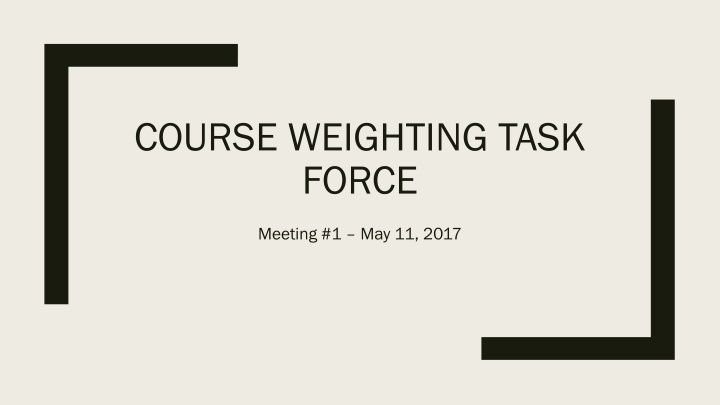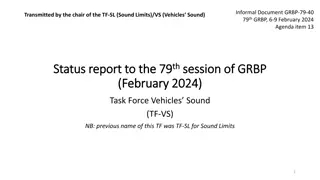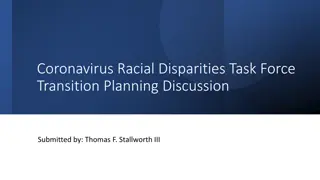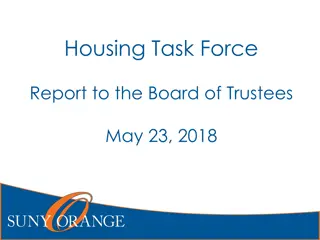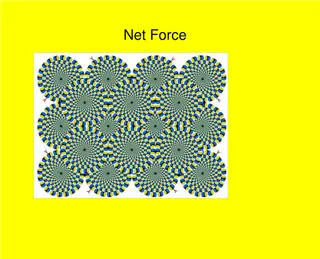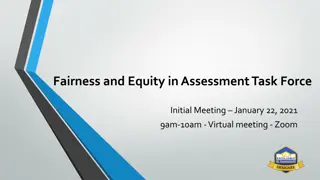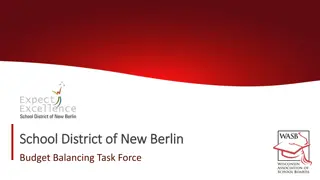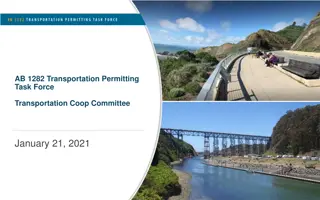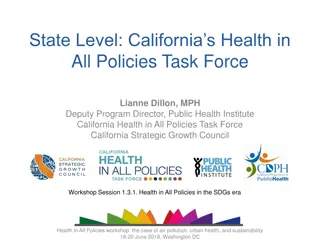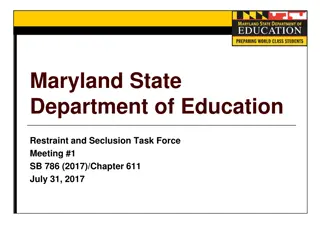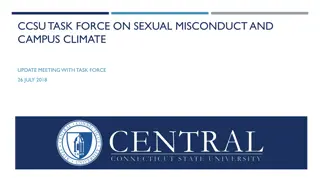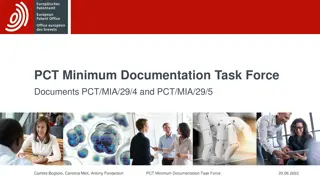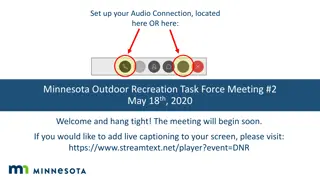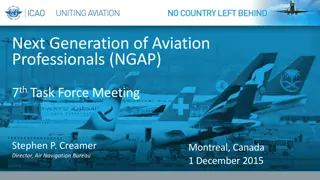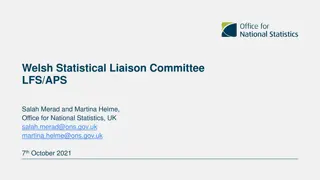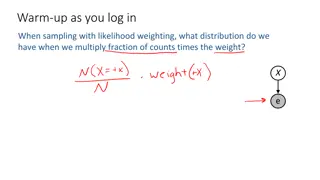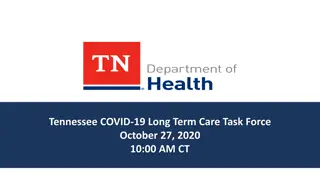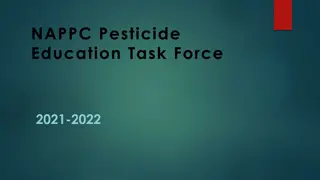Course Weighting Task Force Meeting May 11, 2017
The Course Weighting Task Force meeting held on May 11, 2017, aimed to study and potentially recommend changes to current course weighting practices within SBISD. The task force discussed members' familiarity with the system, concerns, interests, and potential impacts. The executive limitations of the task force were also highlighted, focusing on policies, regulations, and procedures related to weighted grade points in GPA calculations. The task force's purpose, scope, and expected product were outlined, with plans to present findings and recommendations to the Board of Trustees by December 2017.
Download Presentation

Please find below an Image/Link to download the presentation.
The content on the website is provided AS IS for your information and personal use only. It may not be sold, licensed, or shared on other websites without obtaining consent from the author.If you encounter any issues during the download, it is possible that the publisher has removed the file from their server.
You are allowed to download the files provided on this website for personal or commercial use, subject to the condition that they are used lawfully. All files are the property of their respective owners.
The content on the website is provided AS IS for your information and personal use only. It may not be sold, licensed, or shared on other websites without obtaining consent from the author.
E N D
Presentation Transcript
COURSE WEIGHTING TASK FORCE Meeting #1 May 11, 2017
Introductions Chairperson Chairperson Cartha Siddiqui District Leads District Leads Lance Stallworth Randolph Adami Board Liaison Board Liaison Kathryn Dawson Sr. Staff Liaison Sr. Staff Liaison Tyler Ream Task Force Membership Task Force Membership Students, Parents, Teachers, Principals & Assistant Principals, Counselors & Registrars, District Personnel
Table Introductions Introduce yourself, your role in the district, and the school or department you represent Discuss the following questions at your table: 1. What is your level of familiarity with the SBISD Course Weighting System? (On the Post-It Chart, tabulate the number of responses in three categories: None, Somewhat, Expert) 2. What questions/concerns do you have about this work? (Record responses on Post- It Chart) 3. What is your interest in this work? 4. What do you see as the impact of this work? (Record responses on Post-It Chart)
Task Force Charge Purpose & Scope The purpose of the Course Weighting Task Force is to study the effectiveness of current district course weighting practices and potentially make a set of recommendations. SBISD wants to ensure the accuracy, equity, and validity of our course weighting practices in alignment with our T-2-4 goal. The initial guiding question for this work is: Are students selecting courses based on their needs and interests or are there other factors impacting course selection? The Task Force will report its findings and any recommendations to the Board of Trustees.
Task Force Charge Executive Limitations The scope of the committee s work is 1. limited to policies, regulations, practices and procedures that define which courses in the SBISD Program of Studies receive weighted grade points for purposes of calculating grade point average (GPA), and 2. the number of weighted grade points a student can earn.
Task Force Charge Product The Task Force Chairperson(s) and Leads will present any findings and/or recommendations to the Board of Trustees during or before December, 2017. The members of the Course Weighting Task Force will be informed of the time and location of the Board Workshop where the presentation is to be given so that they may be in attendance.
Course Weight Task Force Course Weight Task Force Meeting & Work Schedule Meeting & Work Schedule Introductions & Charge Context the what, how, & why Guiding principles Summer research requests Evaluation of options against the rubric Selection of top 2-3 packages October May/June Analysis of options using real student transcripts Draft Findings & Recommendation Review of summer research & other empathy work Refinement of guiding principles November August Creation of analysis rubric Brainstorming of regulation options Individual options Package options Refinement of Findings & Recommendations Presentation to the Board of Trustees December September
Norms Team norms establishes to shape the interaction of team members with each other and with employees who are external to the team. Once developed, team norms are used to guide team member behavior. Team norms are used to assess how well team members are interacting. Team norms enable team members to call each other out on any behavior that is dysfunctional or that is negatively impacting the success of the team. https://www.thebalance.com/how-and-why-to-create-team-norms-1919229 How can norms support our work? What are our norms? norms are a set of rules or guidelines that a team
Why study our current practices? GPA Grade Point Average Calculated by adding up the earned grade points for each course taken and dividing by the number of courses taken Provides one measure of a student s academic accomplishment while in high school Used to calculate class rank SBISD is a non-ranking district; however rank is used to identify our valedictorians, salutatorians and top 10%. Students outside the top 10% have the choice of showing class rank on their transcript Weighted Grade Points: SBISD s base grade point scale awards six grade points for an A. A course eligible for weighted grade points awards seven points for an A.
Grade Weight Scale Grade Weight Scale Level A B C D F Numeric Grade 90-100 80-89 75-79 70-74 69 & below Advanced (P, Q, G, I, D) 7 6 5 4 0 Grade Level 6 5 4 3 0 Basic/Functional 4 3 2 1 0 *P Advanced Placement Q Pre-Advanced Placement G Gifted/Talented I International Baccalaureate (IB) D Dual Credit (effective for students entering high school in 2014-2015)
Current Practice Students may earn up to 4 weighted grade points annually while in high school for a maximum of 16. Students may earn only one weighted grade point per core subject each year. Weighted grade points are earned in Advanced Placement, Gifted & Talented, Pre-Advanced Placement, Dual Credit (beginning with 2018 graduating class), and IB courses.
Current Practice Students only earn weighted grade points for classes taken during the school day while in high school, including virtual if taken as part of the student s normal class load. Sample exclusions: high school courses taken in middle school, original credit summer school, virtual courses beyond the regular school day, credit by exam Exception: retakes of courses with original grades below 85 are included regardless of setting
Additional Context Current practices have not been studied since prior to 1997 Subsequent to adoption of our current course weighting practices: SBISD adopted T-2-4 Goal SBISD became a non-ranking district State of Texas enacted Foundation Graduation Plan dramatically altering student pathway options to graduation SBISD has expanded course offerings since 2006
Table Talk After hearing more about our current Course Weight Practices: After hearing more about our current Course Weight Practices: What questions do you have? What surprises you about our current system? Given what you heard, what aspects of our current system should we study? (What are our research questions?) Who are our stakeholders in this work?
Next Meeting Next Meeting June 8 4:30-6:30 Board Room Meeting Focus: Development of Guiding Principles Introduction of Empathy Work Homework requests for the District Leads
